Invest in your Fashion. Invest in your Future Let us not look back in anger, nor forward in fear, but around in awareness.
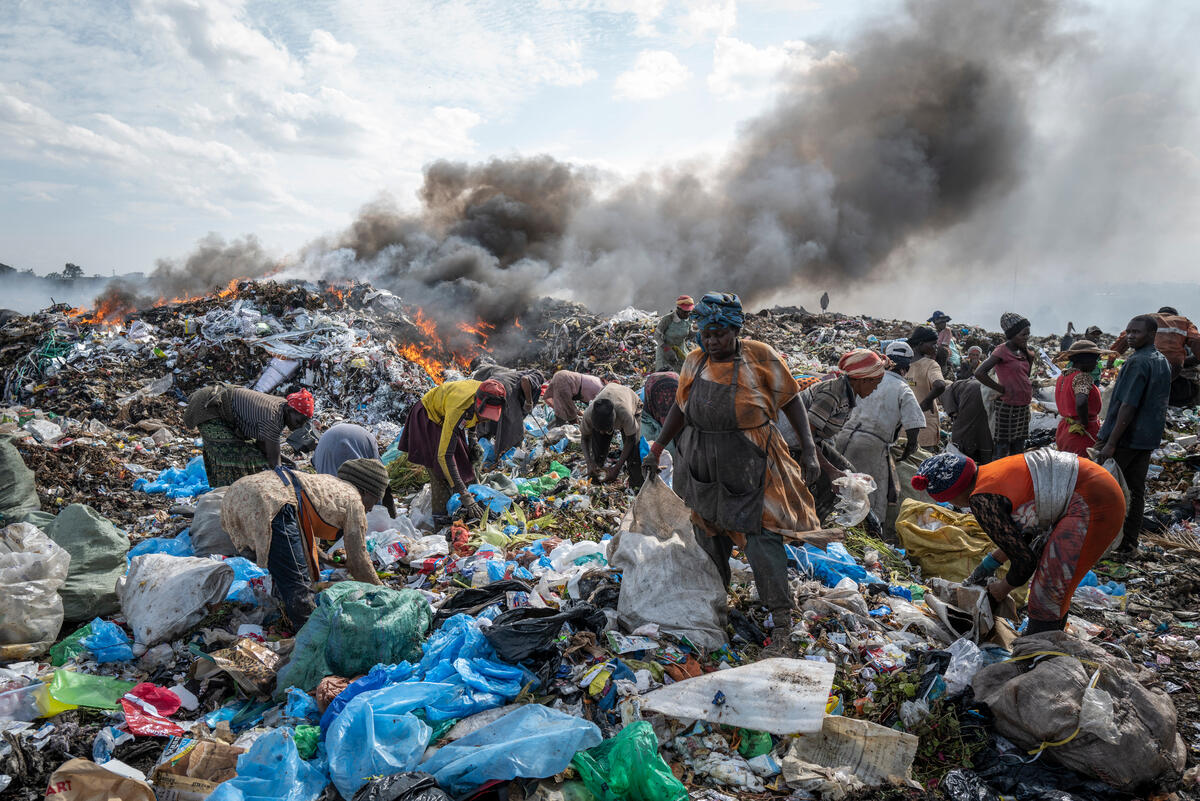
Greenpeace visits places of textile production, distribution, markets and waste disposals. Used and new clothes are sent to Kenya from Europe and China to be sold as so called “Mitumba” but often they end up as landfill and waste disposal due to the huge amount. Here: Textile and plastic waste at Dandora dump site in Nairobi© Kevin McElvaney / Greenpeace
“How fast fashion is fuelling the fashion waste crisis in Africa”
In 2014, the number of garments produced was estimated to be more than 100 billion. This figure is expected to rise to over 200 billion by 2030.
This drastic shift has led consumers to purchase 60% more clothing items annually. However, these clothes only last half as long before consumers discard them and move on to newer trends.
Subsequently, overproduction and overconsumption have resulted in inadequate disposal solutions, prompting Global North countries to dump their fashion waste in the Global South – among them in Africa.
This practice constitutes fashion waste colonialism and comes at a high environmental cost, owing to its contribution to water resource overconsumption, water pollution, and an increased carbon footprint.
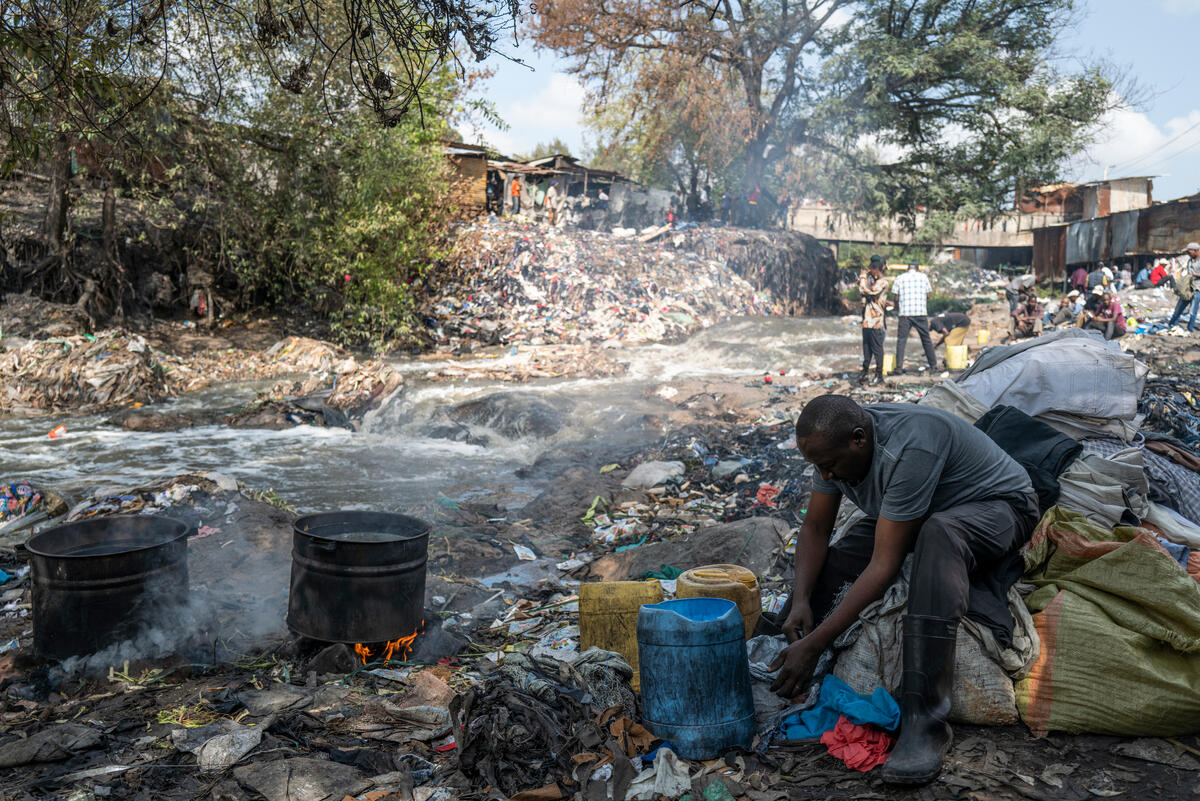
Greenpeace visits places of textile production, distribution, markets and waste disposals. Used and new clothes are sent to Kenya from Europe and China to be sold as so called “Mitumba” but often they end up as landfill and waste disposal due to the huge amount. Here: Textile and plastic waste at Dandora dump site in Nairobi© Kevin McElvaney / Greenpeace
The popularity of second-hand textile markets like Kantamanto and Gikomba markets in Ghana and Kenya respectively, and the revenue earned from this trade portrays how deeply second-hand clothes have been embraced on the continent.
Most consumers prefer these items because they are more affordable compared to locally made garments, which they perceive to be overpriced. A section of these favour thrifted clothes because they offer better variety than locally manufactured apparel. Then there is a small percentage of this population that opts for thrifted clothes to promote environmental sustainability.
However, the quality of second-hand clothes has been gradually declining, with the majority of imports ending up in landfills either because they are too damaged or outdated to be resold. This has sparked legitimate concern as to whether second-hand fashion is evolving into fast fashion.
In 2021, about 458 million of the 900 million used clothing imported in Kenya were worthless. A recent report on the Kenyan thrift market further confirmed this deterioration by mentioning how traders had to part with approximately 20-50% of clothes in bales due to their flawed conditions.
The fashion waste problem has been exacerbated by the unsustainable practices perpetrated by fast fashion brands, such as dumping their dead stock disguised as affordable wear in African countries. The bulk of this dead stock ends up being discarded due to its obsolescence. This overproduction results in overconsumption and breeds a throwaway culture. However, many African countries lack the proper infrastructure to dispose of the waste adequately, endangering the environment and the health of Africans.
Environmental consequences of fast fashion and the resulting fashion waste
The impact of fashion waste on the planet in the aftermath of fast fashion cannot be understated. Fast fashion is responsible for overconsumption of water resources and this practice, along with the resulting fashion waste, is to blame for extensive water pollution and greenhouse gas emissions in Africa.
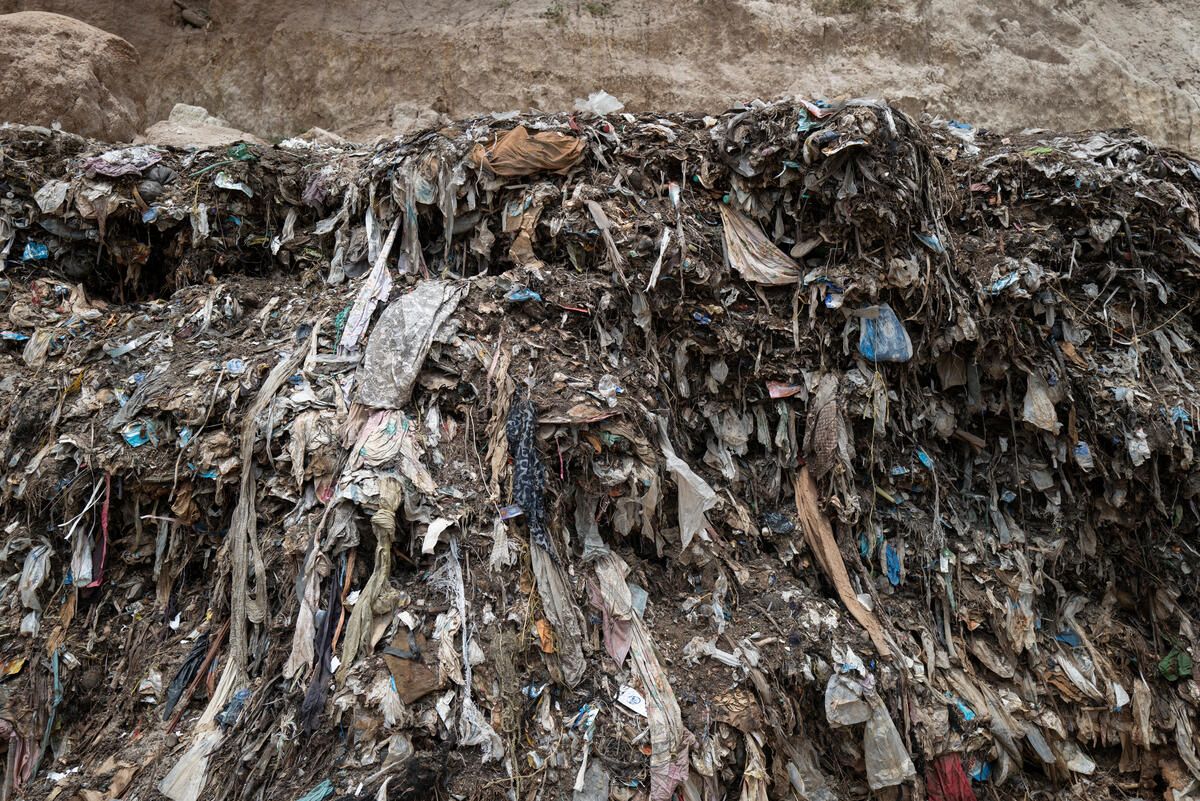
Greenpeace visits places of textile production, distribution, markets and waste disposals. Used and new clothes are sent to Kenya from Europe and China to be sold as so called “Mitumba” but often they end up as landfill and waste disposal due to the huge amount. Here: Textile and plastic waste at Dandora dump site in Nairobi© Kevin McElvaney / Greenpeace
Overconsumption of water resources
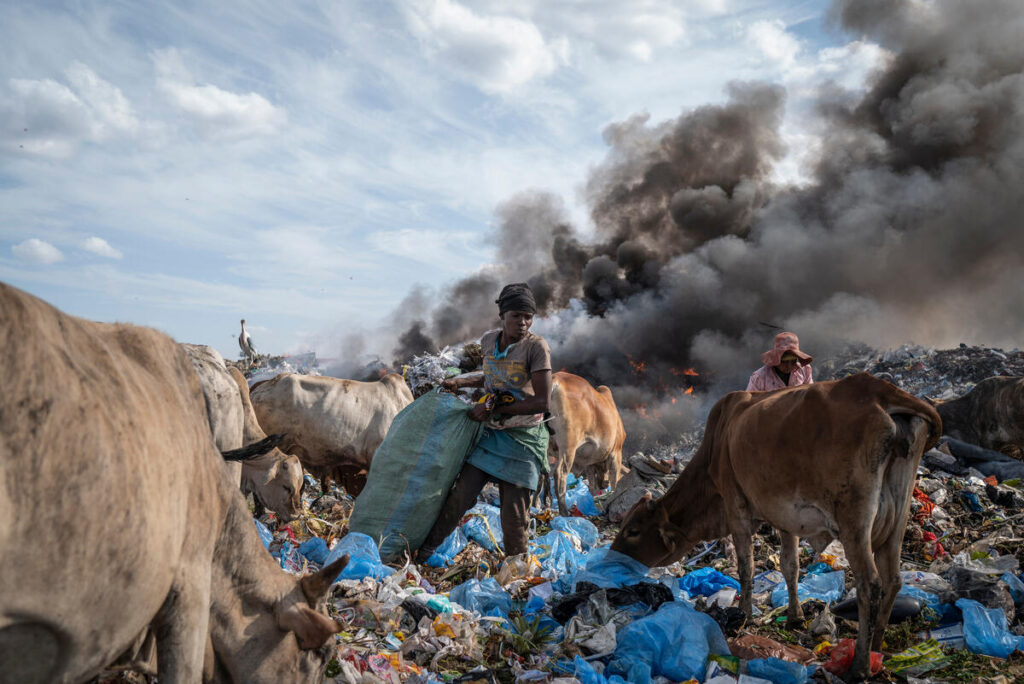
Greenpeace visits places of textile production, distribution, markets and waste disposals. Used and new clothes are sent to Kenya from Europe and China to be sold as so called “Mitumba” but often they end up as landfill and waste disposal due to the huge amount. Here: Textile and plastic waste at Dandora dump site in Nairobi© Kevin McElvaney / Greenpeace
Textile production already consumes high volumes of water. A recent study found that the rapidly growing global population has doubled textile production in the last two decades. As a result, the demand for water has risen significantly.
For context, water is essential in textile wet processing, which involves pretreatment, dyeing, printing, laundry, and finishing. This process utilises 85% of the textile supply chain’s water stock. The United Nations confirms as much by stating that the amount of water used to manufacture a pair of jeans – 8,000 litres – is equivalent to one person’s drinking water for roughly seven years.
In a wider context, fast fashion promotes mass production of garments based on trends. This means that consumers are quick to dump clothes when a new trend surfaces and to meet the demand, fast fashion brands continue the cycle, exacerbating water resource overconsumption.
Water overuse is disruptive to the ecosystem in various ways. For one, it causes water scarcity, limiting access to fresh and clean water across global communities. Inadequate access to water for drinking, agriculture, cooking, or cleaning increases the risk of water-related illnesses and food insecurity.
Animals depend on fresh water for survival too. Water shortage triggered by overuse of water in textile and apparel production limits this resource and threatens the existence of animal species, subsequently damaging the ecological balance.
Fashion waste and water pollution in Africa
Fashion waste from fast fashion brands and imported second-hand garments has triggered a water pollution crisis in numerous African countries. This is mainly because the unsustainable manner in which these clothes are handled, sorted, and disposed amounts to fashion waste.
Some of the ways this fashion waste contributes to this crisis include:
- Poor fashion waste disposal

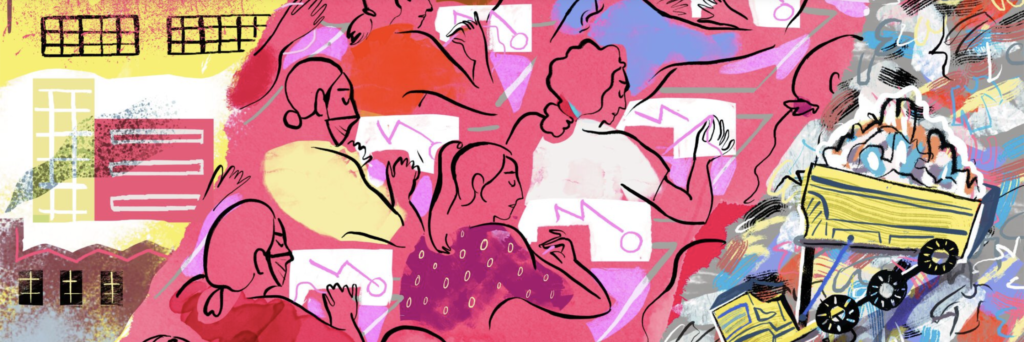
The link between poor fashion waste disposal and water pollution in Africa is undeniable. In Ghana, it is evidenced by the conditions of the Korle Lagoon, whose banks consist of a landfill that is mostly made up of unused clothing shipped from the Global North. The water body, which was once a source of livelihood and recreation for Accra’s residents, now ranks among the most polluted water bodies globally, with the fashion waste build up along its shores worsening the situation.
But the pollution does not end there, as Korle Lagoon opens up to the ocean. According to some of the fishers whose livelihood is dependent on the lagoon and the ocean, poor textile waste disposal is such a huge problem that they are more likely to catch clothes with their nets than fish.
In Kenya, poor textile waste disposal has seen the pollution of various water sources both directly and indirectly. Nairobi River is an example of a water source that has directly been polluted by fashion waste owing to its positioning along one side of Gikomba, the country’s prime second-hand textile market.
Poor fashion waste disposal has also resulted in clogged drainage systems in urban centres in Kenya. The blockage sometimes causes pipes to leak or burst and the overflow ends in nearby water sources, polluting them. Larger water bodies, such as Lake Victoria, have also borne the brunt of fashion waste through the pollution of some of its tributaries.
Many other African countries that import used clothes from western countries also struggle to recycle the resulting textile waste and suffer the same fate.
- Water contamination due to textile dyes and chemicals
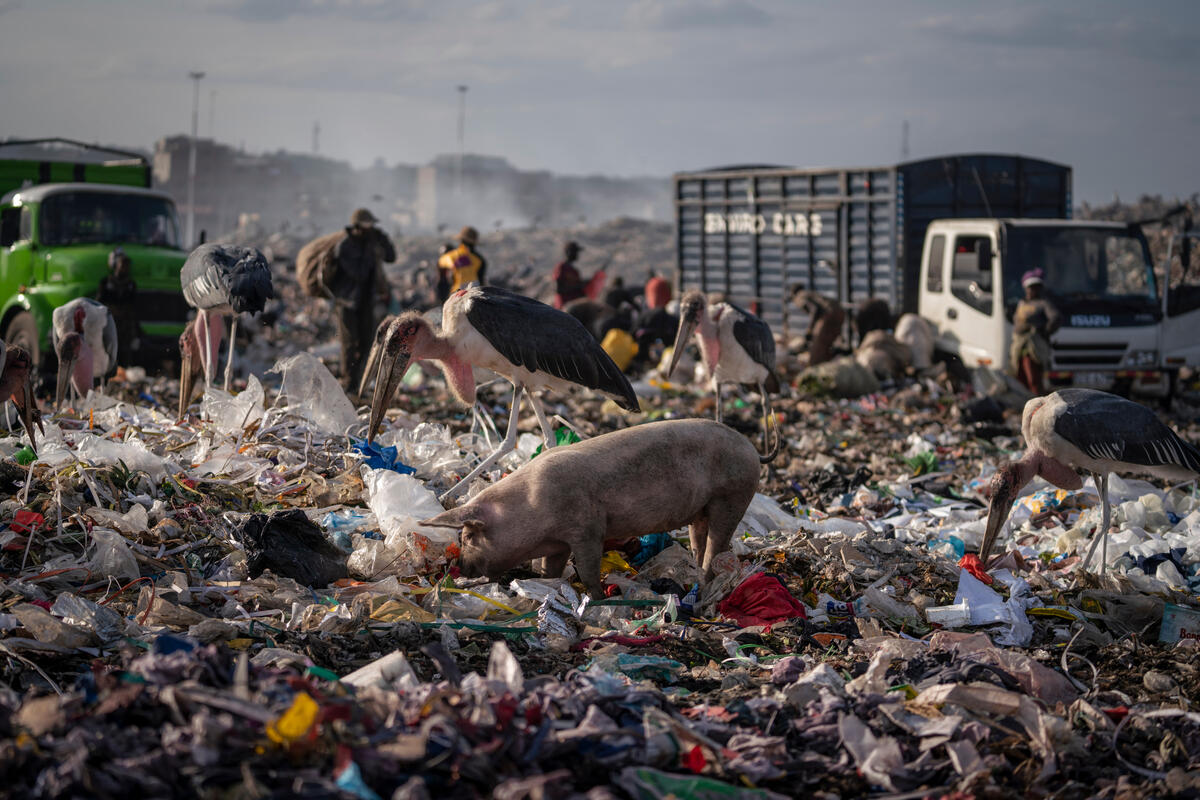
Greenpeace visits places of textile production, distribution, markets and waste disposals. Used and new clothes are sent to Kenya from Europe and China to be sold as so called “Mitumba” but often they end up as landfill and waste disposal due to the huge amount. Here: Textile and plastic waste at Dandora dump site in Nairobi© Kevin McElvaney / Greenpeace
A great deal of imported used textiles are synthetic and undergo a process called textile wet processing, which entails pretreatment, dyeing, printing, and finishing. The amount of chemicals and dyes used during this process is massive and poses a danger to water systems.
Washing these clothes, for instance, causes residual chemicals and dyes to come off. The wash water is disposed of into the sewer system and can contaminate water sources if not properly treated. This water may also seep into the ground, polluting groundwater.
These toxic elements also find their way into water due to illegal dumping, which is common in African countries faced with fashion waste colonialism. This is especially the case because of the close proximity of water bodies to landfills and dumpsites, like the Nairobi river is to the Dandora dumpsite.
Subsequently, water contamination from dyes and chemicals has polluted African rivers, turning their waters blue or as alkaline as bleach, and rendered them unsuitable for agricultural use or for consumption by human beings and livestock.
- Microplastics are washed into water sources
Plastic pollution due to second-hand textile trade is a serious issue affecting Africa’s water bodies. Most of the clothes shipped to African second-hand textile markets are made up of synthetic fibres made from plastic, including acrylic, nylon, and polyester.
These clothes shed microplastics when worn or washed, which make their way into sewer systems. Untreated sewers or leakages in the system often result in contamination of water sources. But even if the water was properly treated, synthetic materials like polyester, which are made from plastic and used in most clothes produced today, are not recyclable or easy to break down. Consequently, this triggers plastic pollution.
Plastic pollution from fashion waste is also a recurring sight along water sources near second-hand textile markets due to informal dumping. The illegal dumping that occurs along the banks of Korle Lagoon in Ghana and Nairobi River in Kenya is responsible for water pollution through plastic waste in both countries.
The pollution of smaller bodies of water also increases the fragility of larger ones as microplastics are easily spread into the latter, contaminating the waters. Consequently, this threatens marine biodiversity as aquatic life, mistaking plastics for food, are likely to choke to death. Similarly water pollution by microplastics from fashion waste endangers the livelihoods of communities that depend on water systems either by killing marine life, lowering crop yield, or increasing the risk of waterborne illnesses.
More notably, the lightweight nature of microplastics makes it easy for them to be dispersed by wind to water bodies nearby, further threatening water quality.
- Inadequate water treatment infrastructure
Many African nations lack adequate water treatment systems to sustain their ever growing populations. These facilities have become even more scarce as waste in the name of fashion is consistently dumped on the continent. The result is continuous discharge of untreated wastewater into water bodies.
The toxic elements present in tonnes of unused apparel are also impervious to water treatment, and end up polluting water once wastewater is discharged into waterways.
How fashion waste contributes to carbon emissions
Another environmental repercussion of fashion waste is increased carbon emissions. It is estimated that the fashion industry is responsible for between 8-10% of global carbon emissions.
Textile production is already an energy-intensive process. When mass manufacturing, a common fast fashion practice, is added to the equation, the demand for energy increases and so do carbon emissions.
Transporting textile products to consumers also relies on fuels. The outcome is an increased carbon footprint.
Then there is the disposal of fashion waste, which in today’s world is happening far too frequently because most clothing has a short life cycle, owing to the poor quality raw material used in production. Much of this waste is incinerated, causing carbon emissions to spiral. Fashion waste that is washed into the ocean further heightens the carbon footprint. According to a Greenpeace report, approximately 35% of primary microplastics in the oceans are from washing synthetic textiles. The abundant microplastics impair the ocean’s capacity to sequester carbon, causing a surge in carbon emissions. This poses severe danger to the environment as it advances global warming and worsens climate change.
Health risks associated with fashion waste
The inadequate disposal of fashion waste also raises health concerns in Africa. In many of the states where second-hand textile trade is rife, most unwearable clothing is left scattered around the markets and in nearby neighbourhoods as most commissioned landfills are full.
In Kenya, a few of these garments are used as fuel for roasting peanuts by individuals looking to earn a livelihood, oblivious to the danger the emitted toxic fumes pose to their health.
These same toxic fumes are present in landfills, where most fashion waste is burnt. Most waste pickers in these landfills lack the appropriate protective gear, making them susceptible to the toxic chemicals released when textile waste is burnt, including respiratory illnesses like asthma, colds, the flu, and lung inflammation.
Besides air pollution-related health issues, water pollution from fashion waste also endangers the population’s health by increasing the risk of waterborne diseases, especially in communities with limited access to water resources. Not to mention that exposure to microplastics can increase the risks of contracting some forms of cancer.
Manufacturing fashion waste
But Africa is not only dealing with fashion waste from imported used clothes but also waste manufactured within the continent. In recent years, popular fast fashion brands, including H&M, Calvin Klein, Zara, and Tommy Hilfiger, have infiltrated the African markets to take advantage of the lax trade regulations, tax incentives, and cheap labour.
Their entry into the market has made the continent more vulnerable to fashion waste and natural resource degradation as the brands continue their unethical practices – overproduction of apparel, environmental pollution, and failure to take accountability.
The Water Witness International report highlights this in great detail, pointing out that the discoloration of waters in African rivers has worsened since these brands entered the African market. Yet rather than adopt new sustainable practices, these brands choose to continue practising greenwashing.
It will take more than superficial fashion sustainability collections like H&M’s Conscious and Zara’s Join Life to tackle the fashion waste problem and prevent further environmental damage by the fashion industry. Fashion brands must be willing to dump fast fashion to save the planet.
Taking Initiative
Not only are global fashion brands engaging in unsustainable practices but they are also being secretive about how much fashion is being produced at any given time. We can no longer allow them to write their own rules at our expense and that of the environment.
The time has come for us as consumers to hold these brands and our governments accountable for their role in the fashion waste crisis. We must call for our governments to enforce stricter environmental standards and demand transparency from fashion brands. We must also insist that the global fashion industry adopt sustainable practices, starting with reducing the volume of garments they produce.
Others ways we can create change with respect to fashion waste include:
- Raising awareness about the environmental cost of fast fashion and fashion waste
The damage fast fashion and the resulting fashion waste causes to our environment is clear. However, many consumers are oblivious to the impact their buying habits have on the environment. Raising awareness about these repercussions can have a positive impact as it enables consumers to take accountability for their actions and act consciously to safeguard their environment. Different ways you can raise awareness include organising educational workshops in your locality, documenting fashion waste and sharing it online for other users to see, and having discussions with friends, colleagues and family.
- Building sustainable fashion habits
Building sustainable fashion habits is a progressive task. One way to achieve it is to prioritise quality over quantity so your clothes can last longer. Remember to choose something that is as versatile as it is durable. Another tip is to organise clothing swaps with friends or find similar events in your area. Clothing swaps are a sustainable way of upgrading your wardrobe without incurring any cost.
- Supporting local sustainable fashion brands
Supporting local fashion businesses is crucial in alleviating the fashion waste problem in Africa. More so, it is imperative to choose a brand that promotes sustainability. Ensure you thoroughly evaluate the brand to verify that it is indeed sustainable and do not hesitate to recommend the brand to others. Building a sustainable local textile industry may take time but with the right incentive, it is bound to grow into a powerhouse.
- Practising upcycling

Greenpeace visits places of textile production, distribution, markets and waste disposals. Used and new clothes are sent to Kenya from Europe and China to be sold as so called “Mitumba” but often they end up as landfill and waste disposal due to the huge amount. Here: Textile and plastic waste at Dandora dump site in Nairobi© Kevin McElvaney / Greenpeace
Upcycling is an ideal method of recycling textile and tackling fashion waste. Leg warmers made from old sweaters or heavy socks, pillow cases repurposed from old dresses or leftover fabric, and jeans transformed into shorts are all examples of upcycling. You can access unlimited resources online to learn more about upcycling, visit upcycling stores to get your clothes repurposed, or find upcycling workshops in your area to learn the skill.
- Finding recycling facilities in your area and liaising with them
Consider donating your clothes to recycling facilities in your area to curb fashion waste. Many recycling facilities are emerging in Africa to promote fashion circularity by recycling fashion waste.

 No products in the cart.
No products in the cart.